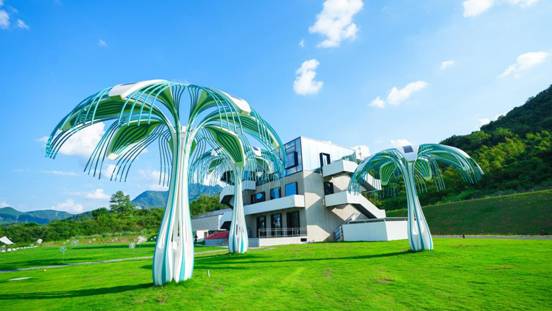Energy revolution in Zhejiang makes rural areas cleaner

[Photo provided to chinadaily.com.cn]
In Anji county, under the prefecture-level city of Huzhou in East China's Zhejiang province, local official Zhu Liang is proud that the county is becoming more beautiful by launching a rural energy revolution.
The revolution, focusing on energy supply, consumption, technological upgrade and institutional transition, is making the county — a mountainous region with some 600,000 residents — ever more cleaner, said Zhu, deputy director of Anji County Development and Reform Bureau.
Known for its pure air, clean water and soil, Anji has a vegetation coverage and forest coverage of both over 70 percent all year around and is the birthplace of the idea that "lucid waters and lush mountains are invaluable assets", which was put forward back in 2005.
He noted that Anji has been included in the first batch of rural energy revolution pilot counties in China, which aims to make the rural regions more beautiful amid rural vitalization.
Ranking among the top 100 counties in China for green development as well as for comprehensive competitiveness, Anji has relied on its good ecological environment and location advantage, vigorously developing a low-carbon circular economy, Zhu said.
Zhu stressed that in Anji, the pilot practice is speeding up the clean and low-carbon transformation of rural energy, and promoting the continuous improvement of energy security and clean substitution levels in its rural regions.
By fully leveraging its resource endowment, Anji has been optimizing its energy structure in recent years, vigorously developing green and clean energy, and utilizing renewable energy sources such as photovoltaics, biomass energy and hydropower on a large scale, he said.
It is anticipated that by 2025, the county's renewable energy is to take up 30 percent of its total primary energy consumption and 60 percent of its incremental primary energy consumption, Zhu said.
The pilot drive is being aided in all major spheres by the local branch of the State Grid — the world's largest utility company which shoulders a dual task of safeguarding the country's energy security as well as its economic lifeline as a mighty power supplier, said Yang Yongsheng, deputy general-manager of State Grid Anji Electric Power Co.
Yang noted that State Grid Zhejiang Electric Power has accelerated the upgrading of the rural power grid and the construction of new power systems in Anji, and set up a demonstration zone in Yucun village, which is the first model in China for its all-element zero carbon and smart distribution network.
This will help boost the harmonious development of a rural new-power system with rural ecological nature and rural industries there, he said.
For daily production activities in rural areas, State Grid Anji Electric Power had bolstered the use of electricity by focusing on industries such as white tea planting and processing, and bamboo processing, in addition to providing supporting power supply to high-standard farmland and improving the electrification level in breeding work in rural areas, he said.
Meanwhile, for low-carbon daily life, the company has constructed more new-energy charging stations in rural areas and helped the government to introduce subsidy policies for electric vehicle public charging facilities, Yang said, adding that the county plans to build five comprehensive energy supply stations by 2025, able to form a basic 15-minute charging circle in Anji.
Yang Ting, a staffer from Yushan Power Supply Station under State Grid Anji Electric Power, revealed that the new energy industry is flourishing in Anji, injecting a strong momentum into its rural green development.
He noted that State Grid Zhejiang Electric Power is promoting photovoltaic technology throughout the county, while partnering with the local government to optimize the development of hydropower resources, and fully leveraging the advantages of bamboo biomass as a zero carbon energy source in a bid to replace 10, 000 metric tons of coal annually.
Anji is expected to usher in 18 low-carbon or net-zero villages by 2025, he added.


